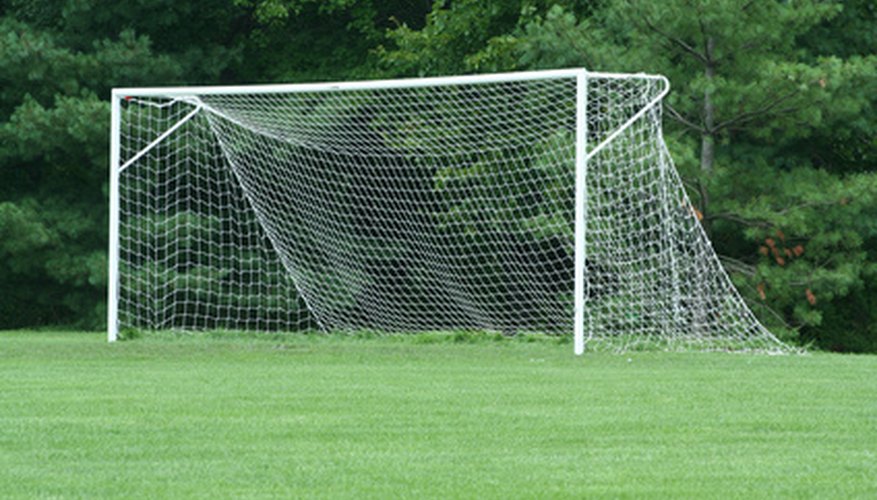Soccer, while not considered a rough sport like Rugby or American football, still involves a fair amount of contact. Sliding tackles, jumping headers and two players running at the ball from opposite directions can all combine to make soccer a risky sport.
No High Boot
Players can be penalised for raising their feet above waist level in an effort to win a ball from an opposing player. A high boot call results in a yellow card warning being issued. In some cases, if the boot is raised to head level or if the studs on the bottom of the boot are exposed, players can received a red card and be ejected from the game.
No Rough Play
Playing soccer at a competitive level necessitates a certain amount of jostling and manoeuvring for position. A player may use his or her body to prevent their opponent from possessing the ball. A player may even use their arms to some degree to keep other players off of them while in possession of the ball. However pushing, shoving or kicking another player is forbidden and can result in a yellow card, or possibly a red card if there is malicious intent.
- Playing soccer at a competitive level necessitates a certain amount of jostling and manoeuvring for position.
- A player may even use their arms to some degree to keep other players off of them while in possession of the ball.
Tackle the Ball, Not the Man
Slide tackles and rough tackles are permissible in soccer. However when making a tackle, the tackling player must get the ball first and not the player in possession. If a player gets the player and not the ball, they may be cautioned or removed from the game. They also risk giving away a free kick or a penalty kick to the opposing team.
- Slide tackles and rough tackles are permissible in soccer.
- If a player gets the player and not the ball, they may be cautioned or removed from the game.
No Dangerous Play
Dangerous play can be defined as anything a player does which puts themselves or other players at risk. Using your arms to gain height in a jumping header is natural, however a player who elbows another player in doing so may be cautioned or ejected. Low headers can also be grounds for a call of dangerous play if they are done in a close proximity to another player. Deliberate, or unnecessary contact with another player such as a swipe of the arm or a stamp of the foot can be counted as dangerous play and is usually grounds for a red card.
- Dangerous play can be defined as anything a player does which puts themselves or other players at risk.
- Low headers can also be grounds for a call of dangerous play if they are done in a close proximity to another player.
